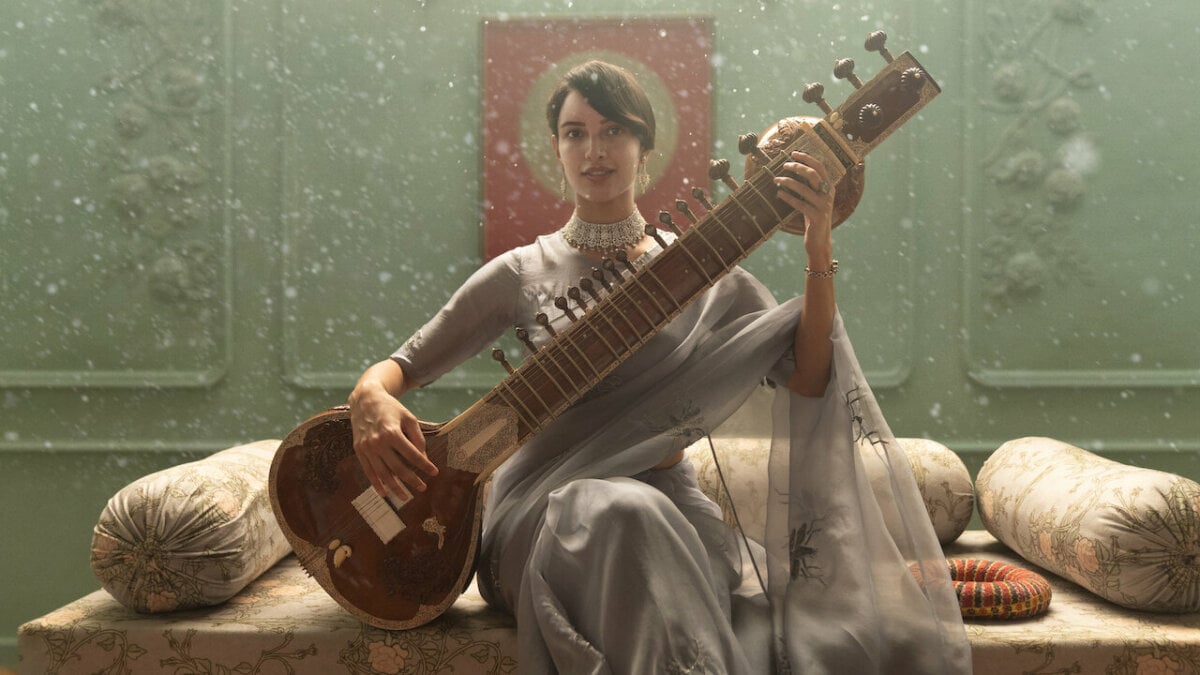Entertainment
Where do women filmmakers stand in India’s major film festival?

Divya Cowasji stumbled into filmmaking. The Parsi-Irani-Indian director, photographer, and filmmaker was completing her master’s in media and cultural studies at Mumbai’s Tata Institute of Social Sciences (TISS) when her own research opened up this unexpected career path.
“My doctoral thesis was on Parsi women and the exclusion they face in the community, and another friend of mine, was writing about her community coming to India during Partition [the 1947 decision to split the country into two separate states: India and Pakistan],” she tells Mashable. “Towards the end of writing our theses, we said, ‘You know what, both our research would make really good films.'”
Cowasji’s co-directorial debut short film Qissa-e Parsi: The Parsi Story, put a spotlight on her ethnic community and its cultural legacy in India, originally arriving from Iran between the 8th and 9th centuries because of the Arab Muslim conquest of their homeland. It screened at the 2014 International Film Festival of India (IFFI) and now, eight years later, the filmmaker has made an applauded return to the Goa-based event’s 53rd instalment with her latest cinematic endeavour. The Show Must Go On is a heartwarming, funny-yet-tragic short film about the reunion of veteran Parsi theatre stars for a one-off revival. It opened the festival’s Indian Panorama Non-Feature programme and Cowasji became one of the few Indian female directors in competition.
IFFI is a government-organised event, funded by India’s Ministry of Information and Broadcasting, so Anurag Thakur, India’s information and broadcasting minister, seemed like a solid person to speak to on the subject of gender equality in the country’s film industry. Mashable, along with other news outlets from around the world, sat down with the minister in Goa to discuss IFFI and the amount of Indian female filmmakers in this year’s lineup. “If you look at the work overall 40 percent goes to the female, in any form,” the minister told Mashable. “If you look at our jury also, you will find a good number of women on those as well…not only in the cinema but also in our government, you will find that there’s a great focus on that.”
Optimistic words, but Thakur’s numbers don’t quite add up. According to a qualitative gender study presented at the festival by Dr. Lakshmi Lingam, dean of media and cultural studies at TISS, there have only been four female ministers of information and broadcasting in India in 75 years (14 percent). On the country’s Central Board of Film Certification, only four female government chairpersons have been appointed in 72 years (14 percent) and female board members have made up only 29 percent in the last 13 years.

The Show Must Go On, directed by Divya Cowasji and Jall Cowasji.
Credit: IFFI 53
Meanwhile, on the IFFI programme, plenty of foreign female filmmakers are featured (30 percent in the international competition) and of the 25 films that make up the core Indian feature film competition, several centre female narratives, as with Lost Bloom, Dhabari Quruvi, Siya, Lost, Naanu Kusama, and Mahananda — but none were directed by women. In the jury for the festival’s official selection, just two women make up the 13 members: sound engineer M. Gita Gurappa and film editor Dr. Anuradha Singh.
If you can see it you can be it
The latter jurist, Singh, came from a small village in India and entered the film industry during the ‘90s where, she says, it was “tough” for women to claim space. Now a lauded film editor, Singh boasts an extensive list of credits at home and abroad including Oscar-winning Slumdog Millionaire, Love Sonia, Extraction, and the acclaimed documentary India’s Daughter. “It’s very disappointing to not see female representation,” Singh says of the lack of feature films directed by Indian women in the festival programme. However, she points to her own success and the range of “women-oriented stories” in the IFFI lineup as a means to inspire other women to seek opportunities in the India film industry. “If I can make it, anybody can,” she tells Mashable. “You need to showcase the journeys and the examples because when you see something happening, you feel inspired by the result in front of you.”
Indian female directors at IFFI can mostly be found outside the festival’s feature film selection, with the majority presenting documentaries. The non-feature competition included Munmun Dhalaria’s short film Chhu Med Na Yul Med, about climate change and the Himalayan mountains; Bani Singh’s Taangh, the story of the Indian hockey team’s defeat of England at the 1948 Olympics; erotic sculpture film Khajuraho, Anand Aur Mukti, co-directed by Deepika Kothari; and, of course, Cowasji’s The Show Must Go On.
Cowasji’s abiding interest in the vaudeville genre, made prominent by its late pioneer Adi Marzban, grew because of the stories her grandfather regaled her with. So, for The Show Must Go On, she became a fly-on-the-wall for a 2017 showcase, an encore performance after a 2012 celebration on what would have been Marzban’s 98th birthday. The performance was directed by and starring Sam Kerawalla as well as other surviving members of his troupe like husband and wife Bomie and Dolly Dotiwala. “I thought I’d record for a day or two, maybe give [the footage] to them as a keepsake – I had no intention of making a film,” Cowasji says. “Within a day or two, I realised that I didn’t want to leave these people.” During the pandemic, she dug out old interviews with the same actors and with her brother, edited together a remarkably poignant and engaging celebration of artistic players, old and new, keeping alive a marginalised artform.
Cowasj is cognizant of the barriers she faces as a filmmaker and a photographer. “As a visual storyteller, there will always be hurdles as a woman,” she says. “Do I have the ability to just set off on the road on my own or go to the spaces I want to all on my own? It doesn’t always feel entirely safe.”
Breaking the glass ceiling
The ease with which Indian men navigate the filmmaking world in terms of safety, creative autonomy and leadership opportunities, is still mostly aspirational for their female counterparts. That’s why academics and industry activists are using qualitative data to highlight the problem in no uncertain terms. At a masterclass on gender participation in Hindi cinema during the festival, a panel comprising Lingam, Dr. Shilpa Phadke from the TISS research team, film critic Meenakshi Shedde, India council lead of the Geena Davis Institute and producer Rashmi Lamba, and Goldfish filmmaker Pushan Kripalani, discussed Lingam’s study on gender and work in front of and behind the camera and the obstacles faced by female directors. “There is a very few percentage of women who are heads of department,” says Lingham. “You’ll find them in music, costume and distribution but not in the core departments,” like directing, assistant directing as well as camera, lighting and cinematography. “Women with technical degrees like engineering and software skills,” she added, “are not on the sets. They do a lot of post production work but they’re not there in the mainstream industry where core decisions about things and creative decisions are made.”
Measures to empower women to take on more creative leadership roles is a big part of the conversation as well infrastructure to support the safer, inclusive working experience of women on sets. “Having toilets or creche facilities, and if women want to complain on issues of sexual harassment, complaints committee should be in place,” said Lingham.
The small number of Indian female directors face discriminatory difficulties even if they are given funding for films, including closer oversight on creative decisions and increased pressure on commercial success, TISS researcher Phadke tells Mashable. “One of the questions raised is how hard it is to get funding, much more so if you’re a woman, and two, once you get that funding, to not have the producer looking over your shoulder all the time,” she says. Phadke also shared the experience of one female filmmaker being pushed to change her female-led film to accommodate a strong male co-protagonist that would entice a big name. “When you have a big actor, you can’t give them a tiny role, so the co-protagonist role expands and you end up making a very different film from the one that you intended,” Phadke explained, though did not name the film in question. “It might not do well and when it doesn’t, it’s like ‘Oh, you made this film and you spent so much money,’ but it was not the film you set out to make.”
Cowasji self-funded her latest short film, and felt “more empowered after simply because I had no resources,” yet surely if women are to gain gender parity, financial backing comparative to men is part of the mission — and getting distribution, whether in film festivals, broad cinematic release, or through streaming.
Streams can come true
As has increasingly been the case for female filmmakers around the world, streaming services continue to provide greater opportunities for women to see their directorial dreams realised. “Releasing films is very difficult for women in India,” says Singh. “But with Netflix, OTT (Indian streaming platform) it’s easy because women can just finish the film and the rest will be taken care of. Your work will come out in public and people can see that.”
Netflix boasts several women in its Indian creative arm from Monika Shergill, Netflix India’s vice-president of content to Tanya Bami, head of series. “India is home to one of the world’s most dynamic entertainment industries and we are excited to be a part of this vibrant creative community,” Shergill said in a press statement. “We are proud to partner with IFFI to showcase these must watch stories.”
One of these was Anvita Dutt’s Qala(opens in a new tab), the only feature film directed by a female Indian filmmaker to show at the festival (outside of competition). It’s a Netflix-backed psychological musical drama set in the late 1930s, early 1940s pre-Independence India and centred on Tripti Dimri’s eponymous singer and her struggle to reconcile her current success with her traumatic past. Beautiful cinematography, gorgeous music, and vulnerable performances elevate Dutt’s somewhat bloated narrative about the toxicity of mother-daughter relationships and the misogyny of the entertainment industry.
The future is female
It’s heartening to see so many women in the film industry given a platform at IFFI to candidly discuss gender inequality and representation despite the lack of female directors in its schedule. It’s one way, Lingam says, the industry can cure the symptomatic issue of underrepresentation. “Making presentations in spaces where often these things are not discussed is part of the broader setting of the tone and bridging the narratives and discourses around talking about what’s going on,” she told the panel. “We also like to have roundtables and consultations with industry people to develop gender equality guidelines.”
Singh also believes initiatives similar to Toronto Film Festival’s Share Her Journey would help support marginalised women to attend festivals where their work can be seen too, at home and abroad. “It’s a beautiful thought,” she says. “So I’m quite hopeful, I’m very optimistic that female filmmakers will get lots of opportunities. There will be producers who will invest and they will trust our way of working and making films.”
The time is now.
-

 Entertainment6 days ago
Entertainment6 days agoSummer Movie Preview: From ‘Alien’ and ‘Furiosa’ to ‘Deadpool and Wolverine’
-

 Entertainment5 days ago
Entertainment5 days agoWhat’s on the far side of the moon? Not darkness.
-

 Business6 days ago
Business6 days agoThoma Bravo to take UK cybersecurity company Darktrace private in $5B deal
-

 Business6 days ago
Business6 days agoHow Rubrik’s IPO paid off big for Greylock VC Asheem Chandna
-

 Business5 days ago
Business5 days agoTikTok faces a ban in the US, Tesla profits drop and healthcare data leaks
-

 Business4 days ago
Business4 days agoLondon’s first defense tech hackathon brings Ukraine war closer to the city’s startups
-

 Business7 days ago
Business7 days agoZomato’s quick commerce unit Blinkit eclipses core food business in value, says Goldman Sachs
-

 Entertainment7 days ago
Entertainment7 days agoMonsta X’s I.M on making music, gaming, and being called ‘zaddy’




























